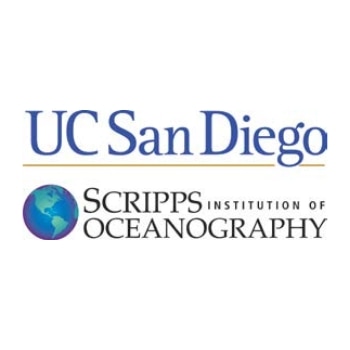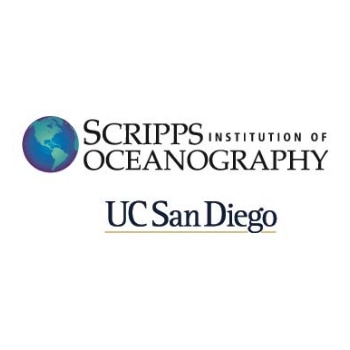

Scripps Contacts: Mario Aguilera or Robert Monroe
858-534-3624; [email protected]
February 4, 2016
Collaboration with SeaKeepers leverages yachting vessels as platforms for science
Scripps Institution of Oceanography/University of California, San Diego
Scripps Institution of Oceanography at UC San Diego’s fleet of research vessels, soon to be augmented with the arrival of the new R/V Sally Ride, has logged hundreds of thousands of nautical miles exploring the world’s oceans—over undersea volcanoes and through monstrous waves—seeking answers to some of the planet’s most daunting environmental challenges.
That effort has now escalated to a new level. An agreement signed between Scripps-UC San Diego and the International SeaKeepers Society (SeaKeepers) will leverage the might of citizen scientists in support of research projects at sea.
The heart of the agreement calls for SeaKeepers—a yachting society with a mission to promote oceanographic research, conservation, and education—to tap into its database of yachting vessel owners willing to offer their ships to marine research and exploration. When a need arises from a Scripps scientist, engineer, or student, a match will be made and the researcher will have a new opportunity to collect samples, deploy instruments, and further their science.
“This agreement provides a way for citizens—yacht owners—to participate in scientific research in a meaningful way,” said Bruce Appelgate, associate director of Scripps Oceanography and head of the institution’s Ship Operations and Marine Technical Support. “It affords the opportunity for interested and motivated nonscientists to make real connections with scientists and their institutions, and to make tangible contributions to ocean science. Through this program, scientists and nonscientists alike can share the experience of understanding and protecting the planet.”
The roots of the collaboration were planted in 2011 when Scripps Director’s Council member Patty Elkus, a founding member of SeaKeepers, worked with Kevin Hardy, a longtime Scripps engineer now retired, on ways to match SeaKeepers member vessels with projects that could benefit from ship support. The idea was guided by Angela Rosenberg, SeaKeepers director of programs and policies, and the SeaKeepers Discovery Yachts Program was born to support science and education outreach.
For Scripps, the newly signed agreement formally opens broad avenues of research with dozens of ships around the world willing to take science to sea. For members of the yachting world, the program allows ship owners to contribute to cutting-edge science in areas spanning from marine biology to climate change science
“My motivation was to connect two exemplary ocean organizations that I support, and align them into a synergistic relationship that will advance oceanographic science,” said Elkus. “As a citizen scientist, I understand firsthand that the Discovery Yachts program is a valuable platform for providing our Scripps scientists with crucial ocean access. It introduces them to SeaKeepers citizen scientists who have the interest and means to support their work in a tangible way and are interested in ‘daring exploration.’”
In an early demonstration proving the value of such collaborations, Scripps graduate student Natalya Gallo is advancing her research on the ecology of deep-sea organisms with help from the San Diego Yacht Club and a local yacht owner
Gallo is investigating the impact of declining subsurface oxygen levels off California, which are known to have dropped some 20-30 percent over the last 25 years. She is looking to deploy oxygen-measuring devices in Southern California’s deep-sea environments in an effort to evaluate how frequently nearshore deep-sea areas are exposed to low-oxygen conditions and how fish respond to such changes.
Gallo had previously worked with Hardy and his extensive expertise in deploying and recovering instruments in the harsh and highly pressurized conditions of the deep. Hardy developed 14-foot-tall deep-sea “lander” science instruments as part of ocean explorer and filmmaker James Cameron’s record-breaking dives to the deepest points on Earth.
Following the successes of the Cameron missions, Hardy developed miniature landers capable of being hand-launched off yachting vessels. San Diego Yacht Club’s Rodney Moll learned of Gallo’s research and Hardy’s new five-foot-tall “nanolander” and volunteered to take them to sea aboard his vessel Niyama. (In the tradition of famed Scripps geophysicist and oceanographer
Walter Munk’s research groups, each instrument is given a name. Gallo has named her nanolander “Beebe” after 1930s deep-sea explorer William Beebe).
In the spring, Moll’s ship will deploy a nanolander equipped with Gallo’s oxygen sensor package and camera system in the Scripps Coastal Reserve off La Jolla. The nanolander and sensor package are capable of recording data unattended on the seafloor in water as deep as 6,500 feet, although this study will focus on depths between 300 and1,200 feet. Months later, the nanolander and scientific instruments filled with new data will be recalled to the surface via an acoustic signal and retrieved.
“Regular access to sea makes this research possible but the partnership with the SeaKeepers Discovery Yachts Program is also a unique opportunity for scientists to engage with the greater community,” said Gallo. “By partnering yacht owners with young scientists, we can both advance scientific efforts and actively engage interested members of the public in the scientific
process.”
For Hardy, an expert in Scripps’s history of exploration, the agreement is a throwback to the institution’s earliest days of research when scientists made full use of citizen scientists and their interests in helping the young institution in its fledgling scientific endeavors.
“More than a hundred years ago, Scripps’s first expeditions used private vessels operated for, or loaned to, the institution by (Scripps co-founder) E.W. Scripps and his colleagues,” said Hardy.
Charles Scripps, great-grandson of E.W. Scripps, was briefed on the collaboration with the yachting community and is excited at its prospects.
“Scripps and SeaKeepers know that when the cost of getting to sea is dramatically reduced, along with the risk associated with reaching the seafloor, then scientific hunches and technical novelty that stretch today’s methods can be tested, evaluated, and improved,” said Hardy. “New breakthroughs will certainly follow.”
Gallo’s research has been supported by the Michael M. Mullin Fellowship at Scripps and the Mildred E. Mathias Graduate Student Research Grant; She also is supported by the National Science Foundation Graduate Research Fellowship Program.
About The International SeaKeepers Society®
The International SeaKeepers Society is a not-for-profit 501(c)(3) organization focusing on the health of the world’s oceans and climate. SeaKeepers works with the boating and yachting community to take advantage of their unique potential in order to further marine research and to raise awareness about the issues our oceans face. The International SeaKeepers Society acts as a global catalyst working with governments, scientists, industry, and other marine organizations to further its mission and to support sensible, achievable marine protection and restoration. For more information visit www.seakeepers.org.
Scripps Communications Office
Scripps Institution of Oceanography
Web: https://scripps.com/
Phone: 858-534-3624
Email: [email protected]
Follow us on Twitter: @ScrippsOcean & @Explorations
Facebook: http://facebook.com/scrippsocean
YouTube: http://www.youtube.com/scrippsoceanography
Instagram: ScrippsOcean
Pinterest: https://pinterest.com/scrippsocean
About Scripps Institution of Oceanography
Scripps Institution of Oceanography at the University of California, San Diego, is one of the oldest, largest, and most important centers for global science research and education in the world. Now in its second century of discovery, the scientific scope of the institution has grown to include biological, physical, chemical, geological, geophysical, and atmospheric studies of the earth as a system. Hundreds of research programs covering a wide range of scientific areas are under way today on every continent and in every ocean. The institution has a staff of more than 1,400 and annual expenditures of approximately $195 million from federal, state, and private sources. Scripps operates oceanographic research vessels recognized worldwide for their outstanding capabilities. Equipped with innovative instruments for ocean exploration, these ships constitute mobile laboratories and observatories that serve students and researchers from institutions throughout the world. Birch Aquarium at Scripps serves as the interpretive center of the institution and showcases Scripps research and a diverse array of marine life through exhibits and programming for more than 430,000 visitors each year. Learn more at scripps.ucsd.edu and follow us at: Facebook | Twitter | Instagram.
About UC San Diego
The University of California, San Diego is a student-centered, research-focused, service-oriented public institution that provides opportunity for all. Recognized as one of the top 15 research universities worldwide and born of a culture of collaboration, UC San Diego sparks discoveries that advance society, drive economic growth and positively impact the world. Our students, who learn from Nobel laureates, MacArthur Fellows and National Academy members, are committed to public service. For the sixth consecutive year, UC San Diego has been ranked first in the nation based on research, civic engagement and social mobility. We are one campus with multiple pillars of excellence, a top ten public university that is transforming lives, shaping new disciplines and advancing the frontiers of knowledge. Learn more at www.ucsd.edu.

